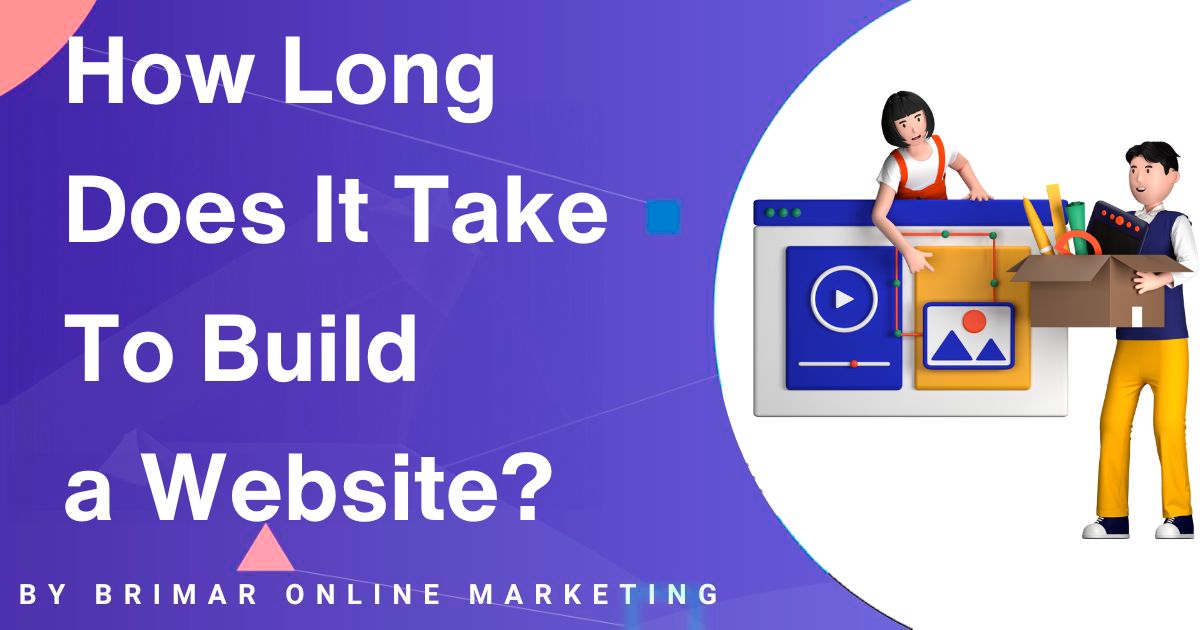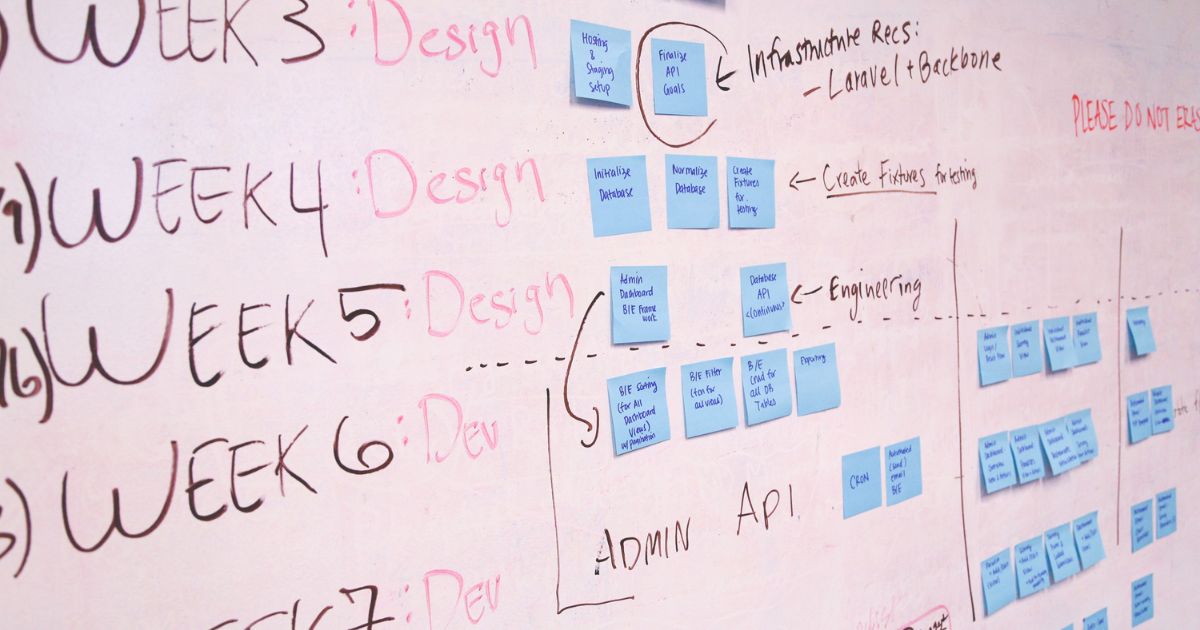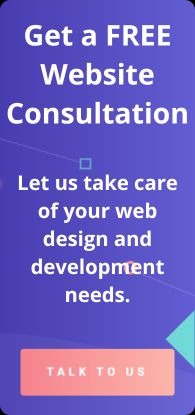
How much time does it actually take to build a website?
That’s a question many people ask whether they’re starting a small blog, setting up an online store, or creating a more complex site with custom features.
The truth is, there’s no one-size-fits-all answer.
It can take anywhere from a few days to several months, depending on the type of website you’re looking to build.
A simple website with just a few pages and basic features might be up and running relatively quickly, especially if you’re using a website builder or pre-made templates.
On the other hand, a complex website, like an eCommerce site with advanced features or a custom website that requires unique design elements, can take significantly more time to develop.
But here’s the thing: speed isn’t everything.
Balancing speed and quality is crucial when building a new website.
Rushing the process could lead to a site that doesn’t perform well or fails to meet the needs of your target audience.
Conversely, taking too much time could delay your online presence and impact your business goals.
Several key factors influence how long it takes to build a website.
The project’s scope is significant; more pages, features, and custom designs naturally take longer.
The web development process itself, including the design, development, and testing phases, can vary based on the complexity of the site and the tools used.
And let’s not forget content creation, which is often one of the biggest contributors to the timeline.
Understanding these factors can better manage expectations and work toward a website that not only looks great but functions smoothly for your users and search engines alike.
Understanding the Website Building Process
When it comes to building a website, understanding each phase is the key factor in ensuring success.
Each step has its purpose and timeline, and knowing how they fit together makes the entire process smoother.
Let’s break down the most important things you need to know about getting your site from idea to launch.
Get a FREE Website Consultation
Let us take care of your web design and development needs so you can focus on your business. We can handle new websites, landing pages, website redesign, and even maintenance.
Contact us today to get a free website consultation!
The Planning Phase
The first step in any website project is planning.
This is where everything begins.
The planning stage sets the foundation, and a solid plan will save you time and headaches later on.
During initial planning, it’s crucial to define the target audience and understand their needs.
After all, the website is for them.
User interaction and experience are also top priorities here.
Think about how visitors will navigate your site and what actions you want them to take.
Creating a site map is another critical piece of the puzzle.
This is where you decide what web pages your site will need.
For example, a landing page that captures attention, a blog section for content, and a contact form for easy communication are common features to consider.
Your site’s structure should align with your goals and make it easy for visitors to find what they need.
The planning phase might not seem glamorous, but it’s the blueprint for everything that comes next.
The Design Phase
After the plan is finalized, the design phase will commence.
This is where ideas start to take visual form.
A user-friendly interface is the goal, and that starts with choosing the right design elements like the color scheme, fonts, and overall layout.
The design process is about ensuring your website looks appealing while being easy to navigate.
There are different approaches to website design.
You could opt for a custom design, which gives you total freedom to create something unique, or you could use pre-made templates if you need to save time.
Your choice will depend on your needs and resources.
A web designer’s skill level can also influence how quickly this phase progresses.
More experienced designers usually get through this process more efficiently while delivering high-quality results.
Another crucial part of the design phase is ensuring that the site works well on mobile devices.
With so many people browsing on their phones, having a responsive design isn’t just a nice-to-have; it’s a must.
Whether you’re working on a WordPress website, a Squarespace site, or something custom, this step shapes the user experience.
The Development Phase
After the design is approved, it’s time for the development phase.
This is where your vision becomes a functional website.
The web developer and development team translate the design into code.
It’s a detailed process that can take time, especially if the website includes dynamic features like animations, forms, or complex navigation.
The tools used for development vary.
Content management systems (CMS) like WordPress and Squarespace are popular because they simplify web development, making building and updating the site faster.
If you’re using a website builder tool, you might cut down on development time significantly.
However, if your site requires advanced features, custom coding may be needed, which can extend the timeline.
The development phase is all about bringing your website to life and ensuring that everything works smoothly behind the scenes.
The Testing Phase
No website is complete without thorough testing.
Once the development phase wraps up, the testing phase begins.
This is when the site is checked for usability, functionality, and compatibility across different devices and search engines.
It’s a critical step because even minor issues can disrupt the user experience.
The final design gets scrutinized to ensure everything looks and functions as it should.
If bugs or errors pop up, they must be fixed before the site goes live.
Testing can sometimes add extra time to the project, but it’s worth it to get things right.
The best way to ensure a smooth launch is to address any issues now rather than later.
The Launch Phase
Finally, it’s time to launch the website.
This is the moment when all your hard work pays off, and your new site becomes accessible to the world.
But launching isn’t just about flipping the switch.
Before going live, search engine optimization (SEO) must be in place to ensure your site is visible on search engines like Google.
Add link building packages to enhance your SEO efforts and improve search visibility.
Your online presence depends on how well your site ranks, so taking the time to optimize everything is critical.
The launch phase might feel like the end of the journey, but it’s also the beginning of your website’s life online.
With proper planning, design, development, and testing, you can feel confident that your site is ready to make an impact.
Different Types of Websites and Their Timeframes
Simple Website vs. Complex Website
When building a website, the time it takes depends a lot on what kind of site you’re aiming for.
If you’re looking for a simple website with just a few pages and minimal features, you could be up and running in less time than expected.
These primary sites often use pre-made templates, which speed up the design and development process.
For example, a simple site that needs a homepage, an about page, and a contact form can be built relatively quickly, sometimes in a few days to a few weeks.
On the other hand, a complex website, like an e-commerce website or a web app, is a whole different story.
A custom website with unique design elements and advanced features will require more attention to detail.
We’re discussing custom coding, integrations, and a user interface tailored to your business needs.
This project naturally takes longer because everything is built from scratch to fit your vision.
Depending on the complexity, a custom website might take several weeks or even months to complete.
So, if you’re weighing your options between a simple website and a complex website, think about how much time you’re willing to invest.
While a simple site can get you online faster, a custom website with advanced features will give you that one-of-a-kind presence, but it’ll require more time and effort.
Blogs and Content-Focused Websites
For content creators, blogs and content-focused websites are about having a strategy that keeps your audience engaged.
The time it takes to build one of these sites largely depends on how much content you need to create up front.
If you’ve got a content plan in place, including blog posts and perhaps some video content, you’re already ahead of the game.
Content creation is at the heart of these sites, so you’ll want to be prepared to spend a good chunk of time on that before the site even goes live.
A well-thought-out content strategy is a good idea because it helps you structure your website around what your audience wants.
Integrating the right content management system (CMS), like WordPress, can streamline your workflow and allow you to add new posts easily as your site grows.
The actual build time for a content-focused website might take a little time if the structure is relatively simple, but the real effort goes into ensuring your website content is top-notch.
From crafting those initial blog posts to embedding video content, the more prepared you are with content, the smoother and quicker the site build will be.
Online Stores and E-Commerce Websites
When setting up an online store, expect to invest additional time in getting all the details right.
Building an e-commerce website isn’t just about having an attractive layout; it’s about functionality.
You must consider product pages, payment gateways, shipping options, and overall user experience.
These additional features can add extra time to the development process.
For example, integrating a secure payment system and ensuring your inventory is displayed correctly can take some back-and-forth with your web developer.
Every detail counts in e-commerce since a smooth user experience is crucial for turning visitors into customers.
If your goal is to build an online presence that drives sales, expect to spend time on both the development and testing phases to ensure everything works seamlessly.
While it might take longer to set up than a primary site, the extra effort is worth it for a polished, fully functional online store that delivers a great shopping experience.
Five Factors That Impact the Website Development Timeline

The timeline for building a website is influenced by various factors, some of which are more obvious than others.
Understanding these elements can help set realistic expectations for your website project and keep things on track.
1. Project Complexity
Its complexity is one of the most significant factors in determining how long your website project will take.
A simple, static website with just a few pages and minimal features can be completed relatively quickly.
But if you’re building a dynamic website with interactive features, custom designs, and advanced functionality, you’re looking at a more significant time commitment.
Static websites are the “just the basics” option, straightforward, no frills, and built to get the job done without much fuss.
On the other hand, a dynamic website requires more intricate web development, with features that allow for user interaction, real-time updates, and customization.
The more complex your site, the more time it will take to build.
So, whether you’re envisioning a static or dynamic website, project complexity is a significant factor in determining your timeline.
2. Number of Pages and Features
The number of pages on your site is another crucial factor that directly affects how much time the development will take.
A website with only a handful of pages, like a landing page, about page, and contact form, will naturally take less time to create than one that needs dozens of product pages, a blog, and several other sections.
It’s not just about the quantity of pages, though; the features you want to include matter, too.
Standard features like contact forms, image galleries, or basic social media integrations are quick to implement.
However, needing more advanced design elements, like interactive maps or integrated payment systems, will require extra development time.
Simply put, more pages and more features mean more time.
3. Team Structure and Skill Level
Who you have on your development team dramatically affects how quickly things get done.
A well-organized team with skilled professionals, such as a web developer, web designer, and project manager, can significantly speed up the process.
Each team member brings their expertise to the table, ensuring that every part of the website is handled efficiently and carefully.
But if the team’s skill level varies or communication isn’t smooth, you might run into delays.
The better your team members collaborate, the quicker they can resolve issues and move forward.
Your project manager also plays a crucial role here, coordinating tasks and keeping everything on schedule.
The bottom line is that a strong development team can save you time, while gaps in skills or poor collaboration can stretch out the timeline.
4. Content and SEO Preparation
Content creation is often overlooked in the early stages of website development, but it’s a critical part of the process.
Having well-written content ready to go can speed things up considerably while waiting until the last minute to create your website’s copy can cause significant delays.
It’s also important to consider search engine optimization (SEO) early on.
SEO preparation isn’t something you want to tackle after the site is live; it needs to be baked into the website’s structure from the start.
Optimizing your content for search engines, setting up meta tags, and ensuring your pages are structured for good SEO are all essential steps that take time.
Getting these pieces right during the development process can save headaches down the road.
5. Testing and Final Adjustments
Once the website is built, it’s time for testing.
This is where you ensure everything works as expected, from the user experience to the technical functionality.
Testing is critical because it’s your chance to catch and fix issues before your site goes live.
It’s not uncommon for testing to reveal minor glitches or areas for improvement that require extra time to fix.
Making these final adjustments ensures that your site looks and functions how you want, but it can add additional time to your timeline.
This final stretch is about fine-tuning to create the best possible experience for your visitors.
Average Time to Build a Website

How long does it take to build a website?
The truth is it depends on a few important factors.
Whether you’re looking to create a basic website, a blog, or an online store, the time required can vary.
Let’s analyze it so you understand what to anticipate.
For a basic website, which typically includes a few pages like a home page, about page, and contact form, the average time to build it can range from two to four weeks.
This time frame assumes the website development process stays straightforward with minimal custom design and features.
The planning phase is often shorter for an essential website since there’s less content and fewer design elements to coordinate.
Moving up a notch, a blog-focused website generally takes four to six weeks.
While it might seem like a simple site, adding blog functionality and ensuring the website content is easy to update can add some extra time to the project.
You’ll also need to consider content creation, especially if you plan to launch with several live posts.
The more posts and features you want, the longer the process might take.
If you’re considering building an online store, you’ll need to budget more time.
A well-structured eCommerce website typically requires six to eight weeks to create.
Why so much time?
Unlike a typical website, an online store integrates product pages, payment gateways, and a smooth user interface.
The development time for an eCommerce site is longer because of the additional features and the complexity of ensuring everything works flawlessly, especially when handling transactions.
The project complexity is a significant factor in determining the total time.
Websites with advanced features, dynamic content, or a custom user experience will take longer than a standard site.
Additionally, the number of web pages, visual elements, and unique functionality will also affect how long the development phase lasts.
Another crucial aspect is the planning phase.
Proper planning can save you much time during development, but rushing through it often leads to delays later.
Taking the time to thoroughly map out the website structure, define the target audience, and set clear goals can streamline the rest of the process.
Ultimately, the average time to build a website is influenced by various factors.
A simple site can take less time, while a more complex one will require extra attention and effort.
When planning your website project, it’s a good idea to consider these factors to set realistic expectations for your timeline.
Four Tips for Speeding Up the Website Development Process
Building a website can sometimes feel like a never-ending task, but it doesn’t have to be that way.
You can streamline the entire process with some foresight and the right approach.
Here are some practical tips to help speed things up without sacrificing quality.
1 Proper Initial Planning
Jumping straight into website development without a plan might seem like a quick shortcut, but it often leads to delays later.
The initial planning stage is an important step that lays the foundation for everything that follows.
A well-thought-out plan ensures that everyone involved in the project is on the same page, minimizing confusion and miscommunication.
The best way to approach this is by mapping out your website’s goals, target audience, and the specific features you need.
Creating a site map is a great starting point because it gives you a clear overview of all the pages and elements your site will include.
This is also the stage where you’ll want to think about your color scheme, design elements, and how your website will function across mobile devices.
Proper planning might feel like it takes up time upfront, but in reality, it’s the key to reducing the total time spent on your website project.
2. Using Website Builder Tools
If you’re a small business owner looking to build your website quickly, website builder tools can be a lifesaver.
These tools provide pre-made templates and accessible drag-and-drop features that let you build a site without writing a single line of code.
They’re a fantastic option for getting a site up and running quickly.
Using a website builder tool is often the best option for those needing a professional-looking site but not having the time or budget to hire an entire development team.
The flexibility of these platforms means you can create a site that fits your brand, whether it’s a simple landing page or a fully functioning online store.
With so many features built-in, you can focus on getting your website live rather than getting stuck in the weeds of technical details.
3. Working with a Professional Developer
While website builder tools are excellent for simplicity, sometimes your project requires a more custom approach.
That’s where hiring a professional developer comes in.
Whether you’re building a web app or a complex website with advanced features, having a skilled developer or a development team can save you a lot of headaches.
A professional developer brings experience to the table, which can help streamline the development process and ensure everything is done right the first time.
They’ll handle the more intricate aspects of coding, integrating third-party tools, and optimizing for performance.
For larger development projects, this is often the smartest route.
Plus, you get the peace of mind that your website is being built with quality and long-term stability in mind.
4. Streamlining Content Creation
One of the biggest bottlenecks in the website development process is content creation.
If your website content isn’t ready when the developers are, it can lead to significant delays.
The best approach here is to plan your content early in the process.
Start by outlining the key pages and blog posts you’ll need for your site.
Then, prioritize creating that content so it’s ready when it’s time to upload.
Preparing everything beforehand means your development team can move faster and avoid unnecessary back-and-forth, whether it’s text, images, or video content.
Remember, the website project doesn’t just depend on the code; outstanding content is just as crucial to the success of your site.
Final Thoughts
Building a website takes time, but the exact amount of time depends on several factors, like the type of website you’re creating, how complex the design is, and the size of the development team.
Whether building a simple site or a feature-packed new website, the entire process can be managed more smoothly with thoughtful planning.
There isn’t a one-size-fits-all answer when it comes to the timeline.
Some projects move quickly, especially if you’re using pre-made templates, while others may take longer, especially for a custom website or an eCommerce site with advanced features.
But here’s the good news: with the right approach, you can create a great website without unnecessary delays.
The key to speeding up the website-building process is having a clear plan from the start.
When every step is mapped out, from the initial planning phase to the final touches, it helps keep the project on track.
With a solid plan and a good team, your new website will come together in a way that meets your goals and captures your vision.
We Have Delivered High Quality Websites and Our Customers Are HAPPY!
“Good quality and responsive service. Isaias is a professional person, he is always aware of the needs of his clients. He has always helped me in my projects.”
CEO


